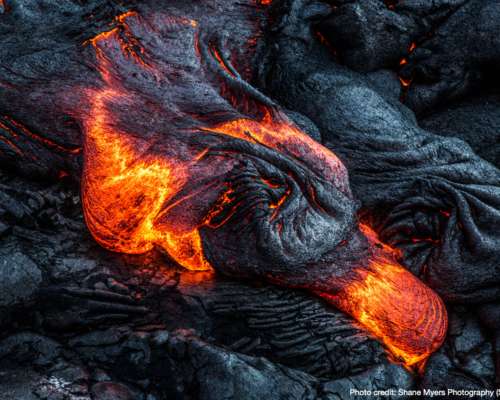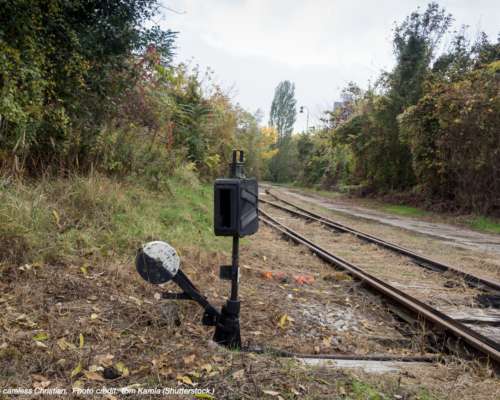This is not the view from my front door, but it’s close. However, what you actually see depends on the time of day and the atmospherics, because sometimes you see rows of mountains as in this photo, and some times you see nothing at all except a fairly flat horizon bordered on the upper margin by clouds or fog (most recently, smoke from the wildfires in California, 3,000 miles away.) But regardless of whether the mountains are visible or whether they are invisible, they are still there nonetheless. Another example of objects that are visible at certain times and invisible on other occasions might be the reefs or shoals near coastlines. Ships depend on lighthouses to warn them of obstacles such as these that are hidden at high tide, lest their ship strike them and sustain mortal damage.
Losing sight of the prize
The author of Hebrews writes “Let us fix our eyes on Jesus, the author and perfecter of our faith…” (12:2.) But what if we lose sight of Jesus, like my guests lose sight of the mountains? What if sin obscures my spiritual vision, or the waves of doubt engulf me, as they likewise threatened Simon Peter? What if the devil blows smoke in my face? I know at times in my life, I’ve cried out to God in fear or despair “Where are you, Lord?!” The poet Dante knew this fear and wrote: “In the middle of the journey of our life I came to myself within a dark wood where the straight way was lost” (Dante Alighieri, Inferno, Canto I.)

Scripture teaches us that “We walk by faith, not by sight.” (II Corinthians 5:7.) We need to trust our senses, our intuition more. Aeroplane pilots a hundred years ago could look out their window and discover where they were. Many people painted the name of their town on the roof of their barn, or on water towers. Pilots could locate major highways and follow them to their destinations. But, when airports got “socked in,” pilots needed instruments to land. Nuclear submarines don’t have windows. The captain has to plot a course through submarine canyons and between mountain peaks which are cloaked in perpetual darkness many fathoms below the oceans surface using highly detailed charts and coordinates provided by the navigator. The captain has utter faith in these charts. The captain’s life and the lives his crew depend on the calculations. And some times, our eyes deceive us, as in the case of desert mirages or optical illusions.
“In the middle of the journey of our life I came to myself within a dark wood where the straight way was lost.”
Dante Alighieri, Inferno, Canto I
God has created everything in the natural world, things we can clearly see (such as trees, animals, oceans, etc.), and things we might need an instrument to see (such as a microscope to see bacteria, a telescope to see faint stars, or a spectrometer to see interactions between physical substances and light.). These are visible to us with the assistance of devices. Some visual effects (like “forbidden colors“) are never perceived by people, unless they have special training or circumstances, though they exist nonetheless.
Spirits in a material world
But there is also a supernatural world with spiritual realities that we cannot normally see, the abode to such creatures such as angels and demons. On rare occasions, however, angels can and do become visible, though perhaps not with wings. These creatures are normally invisible to us. Paul says as much in Colossians 1:16, which reads: “For by him all things were created: things in heaven and on earth, visible and invisible, whether thrones or powers or rulers or authorities; all things were created by him and for him.”
Creeds
The title for this post comes from the Nicene Creed. Every Christian of the True Faith, whether Baptist, Lutheran, CMA, Reformed, Methodist, Pentecostal, Catholic, etc. should be able to confess the Apostle’s Creed and the Nicene Creed. The Apostle’s Creed is the most common of several creeds, and somewhat shorter than the Nicene Creed. A creed is a convenient way of expressing what you believe. Imagine you are talking with a Muslim or Jew or Atheist and they say to you “So, what do Christians believe, anyhow?” The Creed is a convenient way to communicate your faith to them. You reply: “Well, we believe that God is our Father, and He made heaven and earth, and everything that’s either visible or invisible…,” using the case of the Nicene Creed as an example. A creed is not a prayer, like the Lord’s Prayer, but rather a confession, a statement of belief. If you find yourself in a fellowship group or church that does not confess the Apostle’s Creed or the Nicene Creed because they don’t believe what is says, then you need to make a major U-turn.

I did a detailed search through the literature on the phrase “visible and invisible” in the Nicene Creed, and I received very few “hits,” which tells me that the authors of the Creed simply stated the obvious. The Nicene Creed was a product of the Council of Nicaea (325 A.D.), and it met to head-off a heresy called Arianism, and also to make Christianity the official religion of the Roman Empire. The tenets of the Creed come from Scripture, itself. Essentially, this clause means that there is nothing in our universe not created by God.
Visible and invisible churches
There is also a visible church and an invisible church (the Bride of Christ.) We see all sorts of architecture from the lofty cathedrals built during the Middle Ages, to simple “cookie cutter” contemporary churches. Some traditional churches have ornate stained glass windows, others look more like immense metal storage sheds. In the very early Christian book called The Shepherd of Hermas or simply The Shepherd, the church is represented symbolically as a tower, and the individual stones represent the members of the church. Some fit perfectly in the tower wall as they are, though others require reshaping before they can be used.
The many Christian denominations, each with different sacraments or ordinances, or preaching that is expository (or not), messages that are called sermons or, instead, homilies and parishioners who love and fear God or those who attend church for some other selfish reason are part of the visible church. The true believers in each Christian faith are part of the invisible church, and only God knows who they are. These are the ones referred to as, and who participate in, the “communion of saints.” This is the church called the Bride of Christ (Revelation 21:9, 10.)
Featured photo: Erick Durick (Shutterstock.)



